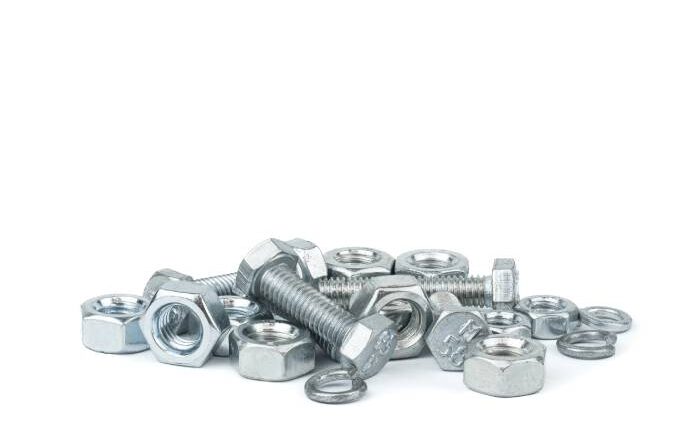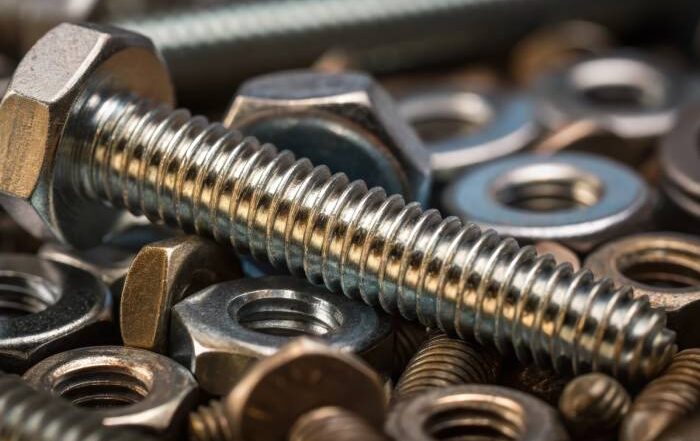
Date Posted:
November 9, 2016
Post Author:
Marsh Fasteners
Categories:
Working with stainless steel fasteners certainly requires prior knowledge about the various materials and grades available and which are best suited to your particular application. Using the wrong fastener can result in damage and extra expenses. If you work with stainless steel fasteners regularly, it’s best to know what options you have to choose from and which fasteners are best suited to your specific application. Let’s take a look at the difference between stainless steel bolts, stainless steel screws and stainless steel studs. Basically the difference between bolts, screws, and studs, are determined by their application.
How Do Bolts, Screws, and Studs Compare?
- Stainless steel bolts – bolts are fasteners that are externally threaded and most often used as a bolted joint in conjunction with a nut. Bolts are fastened by holding the head of it securely while tightening it by turning the nut.
Bolts are primarily utilized in high-tension applications that require a strong and secure connection. They are threaded rods with a head on one end designed to be turned with a wrench or pliers. Bolts are generally used with a nut, which is threaded onto the bolt to secure the objects being joined together.
One significant benefit of bolts is their easy removal and replacement, making them an excellent choice for situations in which objects must be disassembled and reassembled. Additionally, they come in a variety of sizes and materials, which makes them a suitable option for a range of applications.
- Stainless steel screws – screws are designed to penetrate the material. They are secured by applying torque to its head.
Screws are comparable to bolts, but they are primarily used in low-tension applications that require a less secure connection. They are designed to be screwed directly into the material being joined together, without the need for a nut. Screws are typically employed in wood, plastic, or thin metal, and they are available in a variety of sizes and shapes
The benefit of screws is their ease of installation and removal, making them an excellent option for situations where objects must be disassembled and reassembled. Additionally, they are suitable for use in materials that may be damaged by the use of bolts, such as wood or plastic.
- Stainless steel studs – a stud has a bolt-like design except without the head. Both ends of a stud are threaded and the shank which is the middle area of the unit is unthreaded.
Studs resemble bolts, with the key difference being their lack of a head. They feature threads on both ends, making them suitable for screwing into the materials being joined together. They are used in instances where a nut is required on either side of the material, like in constructing buildings or bridges.
One significant benefit of studs is their ease of installation and removal, making them a great choice for situations in which objects must be disassembled and reassembled. Additionally, they come in various sizes and materials, which makes them a suitable option for a range of applications.
All of these units are designed to be strong and resilient, especially if they are made from stainless steel. In the stainless steel fastener manufacturing process, each unit goes through a heating treatment, followed by a hardening and tempering process.
FAQs
With different grades, sizes, and types of stainless steel fasteners available in the market, it can be challenging to choose the right one for your specific project needs. Here are some frequently asked questions about stainless steel bolts, screws, and studs to help you with your next project.
What is the Difference Between a Bolt and a Screw?
The main difference between a bolt and a screw is how they are used. Bolts are typically used to hold two or more objects together by threading a nut onto the end of the bolt to secure it in place. Screws, on the other hand, are threaded fasteners that are used to join two objects together directly.
Another key difference is the shape of the head. Bolts have a flat, smooth surface on the top of the shank, which is designed to be tightened with a wrench or pliers. Screws, on the other hand, have a variety of head shapes, such as flat, rounded, or countersunk, which are designed to be tightened with a screwdriver
What is a Screw Without a Head?
A screw that doesn’t have a visible head like most screws is known as a set screw. Its purpose is to be inserted into a threaded hole or groove in a material to hold or secure it in place. Due to its unique design, it can sit flush with the surface of the material, making it an ideal choice for applications that require a smooth, unobstructed surface. Set screws come in a variety of sizes, shapes, and materials, which makes them an adaptable option for different uses in industries like construction, manufacturing, and automotive.
What is a Bolt Without a Head?
A bolt without a head is called a “stud”. Like threaded rods, studs are used to join objects together, but they are typically embedded in one of the objects being joined, rather than being threaded into a nut. This allows the stud to act as an anchor for the other object.
Are Bolts Better Than Studs?
Whether bolts are better than studs depends on the specific application. Bolts are generally stronger than studs and can be used to join objects together more securely. However, studs are easier to install and can be used in applications where it’s difficult to thread a nut onto a bolt.
Why Use a Bolt Instead of a Screw?
Bolts have several advantages over screws in certain circumstances. A bolt provides greater strength, versatility, and ease of disassembly compared to screws, making them an exceptional choice for many applications.
For example, bolts are typically more durable than screws and can withstand greater levels of strain and tension, rendering them a superior option for situations where the fastener will bear significant weight or pressure.
Bolts can also be used in scenarios where two or more objects must be attached, but they have not been pre-drilled. By using a bolt, it is possible to drill a hole through both objects and secure them together using a nut and washer. They are also frequently used when disassembling objects is necessary later on. If a screw is in a hard-to-reach location, unscrewing it from the top can be challenging. With a bolt, on the other hand, you can quickly loosen the nut and remove the bolt.
How Do I Identify if a Screw is Made of Stainless Steel?
Stainless steel screws are commonly used in applications where corrosion resistance is important, such as in marine environments or outdoor construction. To identify if a screw is made of stainless steel, look for a stamp on the head of the screw that says “SS” or “STAINLESS”.
How Do You Remove a Bolt Without a Head?
Removing a bolt without a head can be tricky, but there are a few methods you can try. One method is to use a pair of pliers to grip the shank of the bolt and twist it out. Another method is to use a bolt extractor tool, which is designed to grip onto the shank of the bolt and allow you to turn it out.
Is a Bolt Stronger Than a Screw?
In general, bolts are stronger than screws. Bolts are designed to withstand higher levels of stress and tension than screws. However, some screws are designed to be very strong, such as lag screws, which can be used in applications where a high level of strength is required.
Do I Have to Use a Stud to Hang Decor on the Walls?
You don’t necessarily have to use a stud to hang decor on the walls. However, it’s generally recommended to use a stud whenever possible, as this will provide a stronger and more secure hold. If you’re unable to find a stud in the wall where you want to hang your decor, you can use alternative methods such as wall anchors or toggle bolts.
What Advantages Do Studs Have Over Bolts?
Studs have some advantages over bolts in certain applications. One of these advantages is that studs can be installed more easily in tight or hard-to-reach spaces, as they do not require a nut to be threaded onto the end. Studs are also particularly useful when joining objects that are too thin to accommodate a bolt and nut, as the stud can be embedded directly into the material.
A stud can also be useful when working with delicate materials or when a more aesthetically pleasing appearance is desired, as there is no nut protruding from the surface.
Buy Best Quality Fasteners at Marsh Fasteners
If you are shopping around for top-quality and well-priced stainless steel fasteners, you will find the widest selection of stainless steel bolts, stainless steel screws, and stainless steel studs to choose from, right here at Marsh Fasteners. For more information and advice on which of these stainless steel fasteners are required for your application, contact us via email or telephone at Marsh Fasteners today.



